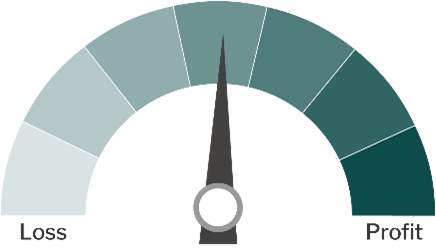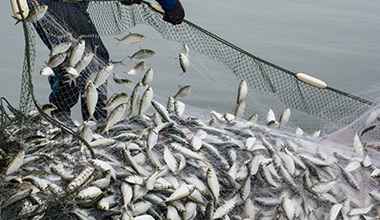Need Help
If you need help setting up services or accessing your accounts, please call our Customer Care Team at 866.552.9172 during business hours (7 a.m. — 5 p.m. PST, M-F) or email us at CustomerCare@AgWestFC.com.
Location
If you need help setting up services or accessing your accounts, please call our Customer Care Team at 866.552.9172 during business hours (7 a.m. — 5 p.m. PST, M-F) or email us at CustomerCare@AgWestFC.com.
Location
If you need help setting up services or accessing your accounts, please call our Customer Care Team at 866.552.9172 during business hours (7 a.m. — 5 p.m. PST, M-F) or email us at CustomerCare@AgWestFC.com.
Securely update and exchange balance sheet information with your AgWest team.
Put your idle cash to work with a suite of banking services that sweeps funds between accounts. Fees apply.
AgWest Farm Credit’s 12-month outlook sees fisheries as breakeven.
12-Month Profitability Outlook

Low prices impact margins
Prices across most seafood products have fallen from 2022 highs. While operations with higher volume may be better able to offset lower prices with more throughput than those with lower volume, low prices may compress margins across the industry.
Several processing facilities shut down
Three major seafood processors in Alaska announced plans to sell processing facilities or temporarily close them for the upcoming season. These plants primarily process salmon and cod in the Aleutian Islands and southeast Alaska. Challenging market conditions have forced processing companies such as these to reevaluate their individual business segments and concentrations in underperforming markets.
Pollock market and production trends shift
Pollock "A" season fishing is underway and reports suggest the industry is processing more fish into pinbone-out and deep-skin fillet blocks than surimi (minced fish paste) so far. Producers are refocusing on domestic markets where buyers prefer fillet blocks. Cheap and abundant Russian supply, high inventory levels in Japan and a strong U.S. dollar have reduced demand in international markets where consumers often prefer surimi. Prices for blocks appear favorable while those for surimi remain unsettled.
Salmon inventories are falling
Anecdotal reports suggest salmon inventories are depleting ahead of the upcoming season; however, it remains unclear how much inventory carryover there will be. Persistently elevated interest rates are incentivizing warehouses to move products despite low prices.
U.S. government to purchase Alaskan seafood
USDA will purchase $150 million in pollock and salmon in the second half of 2024 as part of The Emergency Food Assistance Program (TEFAP). Increased demand from USDA may put some upward pressure on prices.
Import ban on Russian seafood may negatively impact some producers
Tighter restrictions on Russian seafood imports, generally considered positive for the industry, may negatively impact U.S. producers who rely on China for secondary processing. Chinese processors’ chain-of-custody infrastructure (the equipment and processes required to track products, including their originating country) is underdeveloped and may not reliability differentiate between fish from Russia and other countries. Most of Russia’s exports are processed in China.
The fisheries industry will likely see breakeven conditions on average. Low prices are impacting profitability, particularly for smaller producers. Processors are having to reevaluate their strategies due to challenging market conditions while pollock producers shift their product mix to target domestic markets. Salmon inventories are falling, reducing the risk of inventory carryover next season. The U.S. government continues to purchase Alaskan seafood. While the ban on Russian seafood may be a net positive for the industry, producers who rely on China for secondary processing may be negatively impacted.
For more information or to share your thoughts and opinions, contact the Business Management Center at 866.552.9193 or bmc@AgWestFC.com.
To receive email notifications about western and global agricultural and economic perspectives, trends, programs, events, webinars and articles, visit www.AgWestFC.com/subscribe or contact the Business Management Center.

.jpg?Status=Master&sfvrsn=ba5fe18_1)
AgWest supports customers with a wide range of industry and business management resources
Learn more